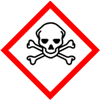 |
King of Chemicals Manufacturers |
Specifications, Properties, Uses, SDS of Mercuric Chloride or Mercury (II) Chloride BP Ph Eur Analytical Reagent Grade Manufacturer Supplier Exporter Wholesale & Small Packs, CAS Number 7487-94-7. |
|
| King of Chemicals has several associated companies having accreditations like cGMP, GLP - FDA Approved Good Manufacturing Practice and Good Laboratory Practice of WHO standard, ISO-9001, ISO-14001, ISO/IEC 17025, ISO ISO-45000, HACCP, FSSC 220000, FSSAI, "REACH" Registered, Kosher & Halal Certified. e-CTD and DMF support can be made available if needed. We offer USP NF BP Ph Eur EP IP JP Analytical Reagent FCC Food Grade Chemicals & Nutraceuticals. | |
        |
|
Muby Chem Pvt. Ltd. is a several decades old group of companies, engaged in manufacturing, supplying, distributing, wholesale supplies of Mercuric Chloride or Mercury (II) Chloride BP Ph Eur Analytical Reagent Grade for actual users, including retail or small pack supplies for research and development work.
We supply fine and speciality chemicals, pharmaceutical excipients, mineral fortifiers in chemically pure, analytical reagent grade, IP BP USP Ph Eur EP JP and other pharmaceutical grade monograph including FCC Food grade chemicals and Nutraceuticals at best prices. We and/or our associated units have all the facilities to supply as per cGMP standard observing good manufacturing practice and good laboratory practice. We can assure low microbial count and also offer a test certificate for the same. We maintain warehouses across USA, India, and UAE. Our group exports to USA, Canada, Mexico, Argentina, Brazil, Chile, Korea, Malaysia, Thailand, Indonesia, Europe, and several other parts of the world. We supply in wholesale container loads to small pack of few grams. Solid products may be specified for it size and shape as desired by the buyer.


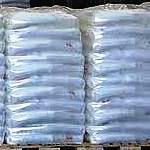

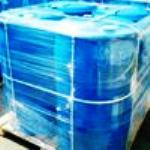
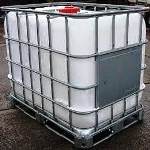
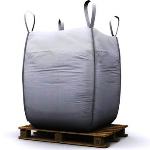
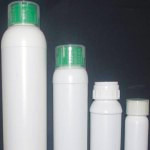
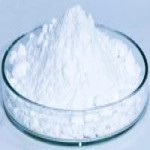
Mercuric Chloride or Mercury (II) Chloride CAS Number 7487-94-7
For Properties Specifications Uses of Mercuric Chloride Click Properties, Specifications, Uses, Price, Process of Mercuric Chloride Manufacturer.
For For SDS MSDS Sheet of Mercuric Chloride or Mercury (II) Chloride Click SDS Safety Data Sheet MSDS Sheet of Mercuric Chloride Manufacturer.
The Properties, Specifications, Monograph and Uses of Mercuric Chloride or Mercury (II) Chloride:
Mercuric Chloride BP Ph Eur Grade:
HgCl2 --- 271.5 --- CAS: 7487-94-7
DEFINITION
Content: 99.5 per cent to 100.5 per cent (dried substance).
CHARACTERS
Appearance: White or almost white, crystalline powder or colourless or white or almost white crystals or heavy crystalline masses.
Solubility: Soluble in water and in glycerol, freely soluble in ethanol (96 per cent).
IDENTIFICATION
A. It gives the reactions of chlorides.
B. Solution S (see Tests) gives the reactions of mercury.
TESTS
Solution S: Dissolve 1.0 g in carbon dioxide-free water and dilute to 20 mL with the same solvent.
Appearance of solution: Solution S is not more opalescent than reference suspension II and is colourless.
Acidity or alkalinity: To 10 mL of solution S add 0.1 mL of methyl red solution. The solution is red. Add 0.5 g of sodium chloride. The solution becomes yellow. Not more than 0.5 mL of 0.01 M hydrochloric acid is required to change the colour to red.
Mercurous chloride: Dissolve 1.0 g in 30 mL of ether. The solution shows no opalescence.
Loss on drying: Maximum 1.0 per cent, determined on 2.00 g by drying in vacuo for 24 h.
Mercuric Chloride Analytical Reagent Grade:
Mercury(II) Chloride
HgCl2 --- Formula Weight 271.50
CAS Number 7487-94-7
REQUIREMENTS
Assay: 99.5% HgCl2
Solution in ethyl ether: Passes test
MAXIMUM ALLOWABLE
Residue after reduction: 0.02%
Iron (Fe): 0.002%
The MSDS-SDS Hazard Statement of Mercuric Chloride or Mercury (II) Chloride:
Mercury (II) chloride or Mercuric chloride SDS, Safety Data Sheet
MSDS Sheet, Material Safety Data Sheet 02-April-25
Section 1. Product Information
Product Name & Other Names: Mercury (II) chloride or Mercuric chloride.
CAS No.: 7487-94-7
EINECS EC Number: 231-299-8
Chemical Formula: HgCl2
Molecular Weight: 271.52
Relevant uses and uses advised against (if any): Industrial Manufacturing.
Section 2: Hazards Identification
GHS, Globally Harmonized System Classification in accordance with 29 CFR 1910
Classification according to Regulation (EC) No 1272/2008
Acute toxicity, Oral (Category 2), H300
Skin corrosion/irritation Category 1A, B, C H314
Germ cell mutagenicity (Category 2), H341
Reproductive toxicity (Category 2), H361f
Specific target organ toxicity, repeated exposure Category 1, H372
Chronic aquatic toxicity (Category 1), H410
Labeling according to GHS & Regulation (EC) No 1272/2008
GHS Label Elements  Aquatic Toxicity |
GHS Label Elements |
GHS Label Elements |
GHS Label Elements |
Signal Words: Danger
Hazard statements:
H300 Fatal if swallowed.
H314 Causes severe skin burns and eye damage.
H341 Suspected of causing genetic defects.
H361f Suspected of damaging fertility.
H372 Causes damage to organs through prolonged or repeated exposure.
H410 Very toxic to aquatic life with long lasting effects.
Precautionary statements:
P260: Do not breathe dust/fume/gas/mist/vapors/spray.
P264: Wash --- thoroughly after handling.
P270: Do not eat, drink or smoke when using this product.
P271: Use only outdoors or in a well-ventilated area.
P280: Wear protective gloves/protective clothing/eye protection/face protection.
P314: Get medical advice/attention if you feel unwell.
P301+310: IF SWALLOWED: Immediately call a POISON CENTER or doctor/physician.
P303+361+353: IF ON SKIN (or hair): Remove/Take off immediately all contaminated clothing. Rinse skin with water/shower.
P333+313: If skin irritation or a rash occurs: Get medical advice/attention.
P304+340: IF INHALED: Remove victim to fresh air and keep at rest in a position comfortable for breathing.
P303+361+353: IF ON SKIN (or hair): Remove/Take off immediately all contaminated clothing. Rinse skin with water/shower.
P405: Store locked up.
Section 3: Composition and Information on Ingredients
Product Name & Other Names: Mercury (II) chloride or Mercuric chloride.
CAS No.: 7487-94-7
EINECS EC Number: 231-299-8
Section 4. First Aid & Procedure
Always get medical attention after the first aid is over.
Ingestion: Never give anything by mouth to an unconscious person. Get medical attention.
Skin: Immediately flush skin with plenty of water for at least 15 minutes. Remove and wash contaminated clothing and shoes before reuse. Get medical attention if irritation develops.
Eyes: Immediately flush eyes with plenty of water for 15 minutes, occasionally lifting upper and lower eyelids. Hold eyelids apart during irrigation. Get medical attention.
Inhalation: Remove person to fresh air. If breathing is difficult, give oxygen. If not breathing administer artificial respiration. Get medical attention.
Section 5. Fire Fighting Measures
Fire/Explosion: Not considered to be a fire and explosion hazard.
Extinguishing Medium: Water spray, alcohol-resistant foam, dry chemical or carbon dioxide.
Special hazards arising from the substance/ mixture: Mercury oxides, Chlorine and fumes.
Fire Fighting Instructions: Use suitable protective equipment for surrounding fire.
Special Information: In the event of a fire, wear full protective clothing and NIOSH-approved self-contained breathing apparatus with full face piece operated in the pressure demand or other positive pressure mode. At high temperatures under fire conditions, it may produce toxic or irritating fumes.
Section 6. Spills and Disposals
Personal precautions, protective equipment, and emergency procedures: Avoid breathing dust/fumes/gas/mist/vapors/spray. Use individual protective equipment (waterproof boots, suitable protective clothing, safety glasses, etc.). Restrict unprotected personnel from the area.
Environmental precautions: Do not let the product enter drains, soil, or water sources.
Methods and materials used for containment Cleanup procedures and Storage: Contain spilled material. Do not touch or walk through this product. Do not let the product enter drains. Use a shovel to put the material into a convenient waste disposal container.
Section 7. Handling and Storage
Precautions for safe handling: Apply according to good manufacturing and industrial hygiene practices. Ensure proper ventilation. In case of insufficient ventilation, wear suitable respiratory equipment. Wash thoroughly after handling. Do not drink, eat, or smoke while handling. Avoid contact with skin, eyes, and clothing. Minimize dust generation. Avoid breathing dust/fumes/gas/mist/vapors/spray. Keep container tightly closed. Avoid ingestion and inhalation. Use individual protective equipment (waterproof boots, suitable protective clothing, safety glasses, etc.).
Conditions for safe storage, including any incompatibilities: Store in cool, dry, and ventilated area away from heat sources and protected from sunlight in tightly closed original container. Keep air contact to a minimum. Store protected from heat, sparks and ignition sources and incompatible materials. Avoid inhalation of dust/mist/vapor. Do not store with incompatible materials like strong oxidizing agents and strong acids. Product is sensitive to light and moisture.
Section 8. Exposure Controls & Personal Protection
Exposure Limits for Phenyl Mercuric Acetate:
USA. NIOSH Recommended Exposure Limits: 0.05mg/m3 TWA.
ACGIH TLV: 0.1 mg/m3 (TWA).
European Union: TWA: 0.02 mg/m3 (8h).
Engineering Controls: Use adequate exhaust ventilation to keep airborne concentrations below the allowable exposure limit.
Ventilation System: A system of local and/or general exhaust is recommended to keep employee exposures as low as possible.
Personal Respirators (NIOSH Approved): For conditions of use where exposure to dust or mist is apparent and engineering controls are not feasible, a particulate respirator may be worn.
Skin Protection: Wear protective gloves and clean body-covering clothing.
Eye Protection: Use chemical safety goggles and/or full face shield where dusting or splashing of solutions is possible. Maintain eye wash fountain and quick-drench facilities in work area.
Other Control Measures: Maintain good housekeeping in work area. Handle in accordance with good industrial hygiene and safety practice.
Section 9. Physical & Chemical Data
Appearance: Colorless or white solid.
Odor: Odorless.
Odor threshold: No information found.
pH: No information found.
Relative density: 5.43.
Melting point/freezing point: 276C.
Initial boiling point and boiling range: 304C.
Flash point: No information found.
Auto-ignition temperature: No information found.
Decomposition temperature: No information found.
Upper/lower flammability or explosive limits: No information found.
Vapor pressure: No information found.
Vapor density: No information found.
Evaporation rate: No information found.
Flammability (solid, gas): No information found.
Partition coefficient: n-octanol/water: No information found.
Solubility(ies): Soluble in water.
Viscosity: Not available.
Section 10. Stability and Reactivity
Chemical Stability: Stable under normal temperatures and pressures.
Incompatibility (Materials to Avoid): Strong acids and strong oxidizing agents,.
Conditions to Avoid: Incompatible materials, exposure to moist air or water, excessive heat and light.
Hazardous Decomposition Products: Mercury oxides, Chlorine and fumes.
Hazardous Polymerization: Will not occur.
Section 11. Toxicological Information
Toxicity to Animals: LD50 Oral - Rat - 1 mg/kg. LD50 Dermal - Rabbit - 41 mg/kg.
Carcinogenicity: Not listed by NTP, OSHA.
Teratogenic Effects: No information found.
Mutagenic Effects: Suspected of causing genetic defects..
Developmental Toxicity: No information found.
Reproductive Effects: Suspected of damaging fertility.
Section 12. Ecological Information
Toxicity to fish: LC50: 0.1 - 0.182 mg/L, 96h flow-through (Pimephales promelas).
Toxicity to daphnia and other aquatic invertebrates: EC50 Daphnia magna (Water flea): 0.003 mg/l; 48 h.
Ecotoxicity: Very toxic to aquatic organisms, may cause long-term adverse effects in the aquatic environment.
Mobility: Likely to be mobile due to water solubility.
Bioaccumulation/ Accumulation: No information available.
Results of PBT and vPvB assessment: No information available for assessment.
Section 13. Disposal Suggestions
Dispose of in accordance with all applicable local, state, and federal regulations at an approved waste disposal facility. Follow all the pollution control rules.
Section 14. Transport and Label Information
DOT USA, TDG Canada & ADR/RID Europe:
UN-No UN 1624
Proper Shipping Name: MERCURIC CHLORIDE
Hazard Class 6.1; Packing Group II
IMDG/IMO
UN-No UN 1624
Proper Shipping Name: MERCURIC CHLORIDE
Hazard Class 6.1; Packing Group II
IATA:
UN-No UN 1624
Proper Shipping Name: MERCURIC CHLORIDE
Hazard Class 6.1; Packing Group II
Section 15. Regulatory Information
USA:
SARA 302: Listed
SARA 311/312 Hazards: Acute and Chronic Health Hazard..
California Prop. 65 Components: Listed.
Section 16. Other Information
Disclaimer:
**************************
Our company provides this MSDS sheet in good faith but makes no representation as to its comprehensiveness or accuracy. This SDS sheet is intended only as a guide to the appropriate precautionary handling of the material by a properly trained person using this product. The above information has been compiled from various sources and has the possibility of discrepancy and being out-dated information. Individuals receiving the information must exercise their independent judgment and do further search in determining its appropriateness for a particular purpose. In no case shall our company be liable to loss or damages by the product user.
**************************

Mercuric Chloride or Mercury (II) Chloride Manufacturers, Suppliers, Exporters, Wholesalers:
King of Chemicals manufacturers

Plot No. 2900/46&47 + 2900/163to167, GIDC, Ankleshwar, Dist. Bharuch, India
India, USA, UAE
TEL: (Office) 91-22-23774610, 91-22-23723564
e-mail: info@kingofchemicals.com
Copyright and Usual Disclaimer is Applicable --- April 2, 2025
If I give you “My Word” Nobody can undo it.
If I sign an “Agreement” my Lawyer will undo it
Our products are for industrial and laboratory use only. The user must test the material before use. We are not dispensing chemists or druggist and do not offer over the counter type (OTC) products for medical use by individuals.
We and our associates manufacture pure chemicals surpassing Monograph Specifications of Analytical Reagent Standards, British & European Pharmacopoeia BP Ph Eur EP Standard, US Pharmacopoeia USP NF Standard, Indian Pharmacopoeia IP Standard, Japan Pharmacopoeia JP Standard, FCC Food Grade Standard. |
|
